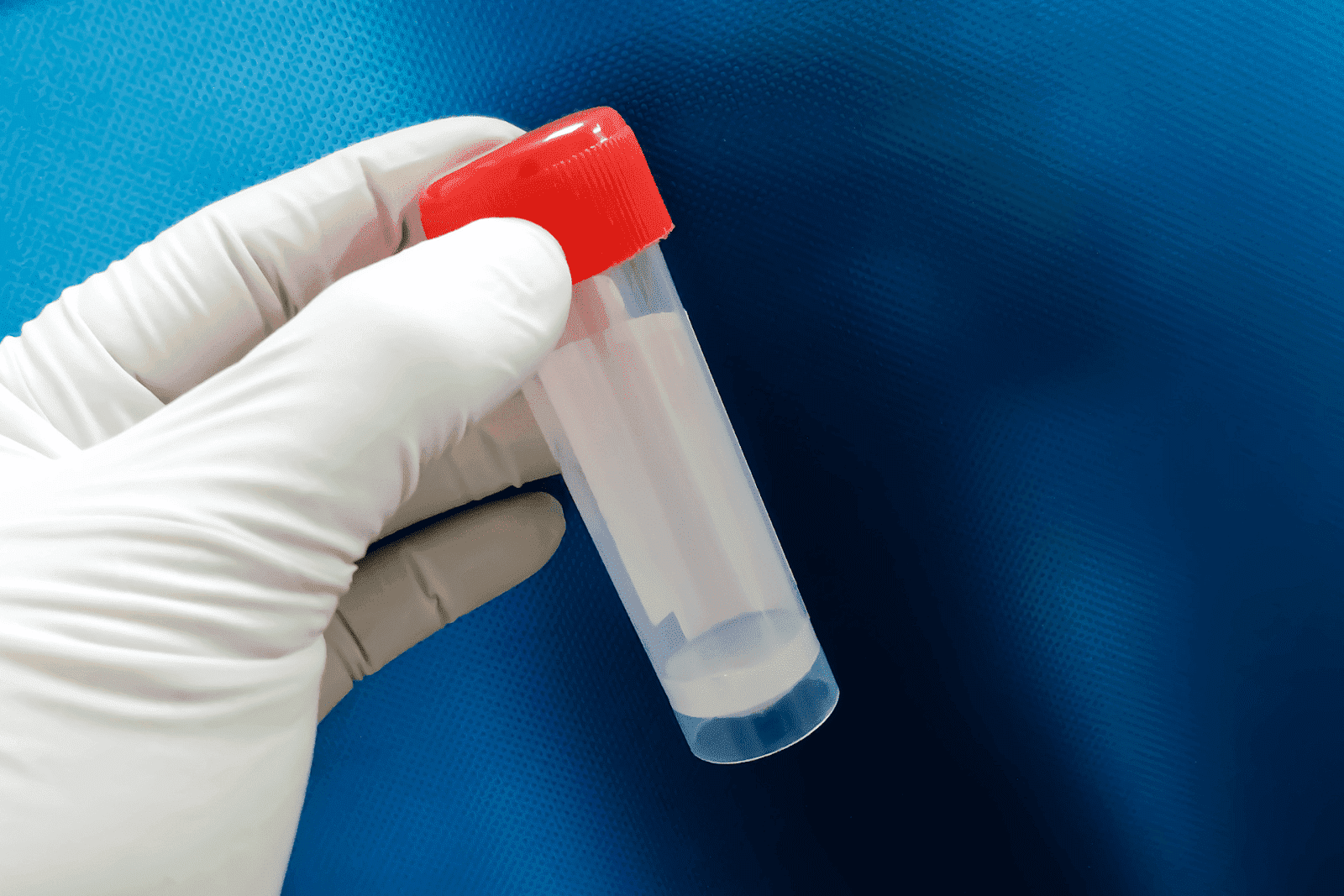What Color Is Sperm After a Vasectomy?
Undergoing a vasectomy is a significant decision for many men seeking a permanent form of contraception. While the procedure is generally straightforward and safe, it often [...]
Read More
Medically reviewed by Abhijit Bhattacharyya | MD, PhD, MBA, Tufts University School of Medicine - Miami, Florida on October 13th, 2025.
Undergoing a vasectomy is a significant decision for many men seeking a permanent form of contraception. While the procedure is generally straightforward and safe, it often raises questions about changes in the body afterward. One common concern is about the color of sperm following a vasectomy. Understanding what happens to sperm and seminal fluid after the procedure can help ease anxieties and clarify expectations.
A vasectomy is a surgical procedure designed to prevent sperm from entering the ejaculate, effectively leading to male sterilization. During the procedure, the vas deferens (the tubes that carry sperm from the testicles to the urethra) are cut, tied, or sealed. This prevents sperm from mixing with the seminal fluid that is ejaculated.
It is important to note that a vasectomy does not affect the production of sperm in the testicles; sperm are still produced but are reabsorbed by the body. The seminal fluid, which makes up most of the volume of ejaculate, is produced by other glands such as the seminal vesicles and prostate. This means that the volume and general appearance of ejaculate remain largely unchanged after a vasectomy.
In addition to its primary purpose of contraception, a vasectomy can have various psychological and relational implications for men and their partners. Many men report a sense of relief and freedom from the anxiety of unintended pregnancies, which can enhance intimacy and sexual satisfaction. However, it is crucial for couples to engage in open discussions about the decision to undergo a vasectomy, as it can significantly impact their family planning and future reproductive choices. Some men may also experience a range of emotions post-procedure, including relief, regret, or even a sense of loss regarding their fertility.
Moreover, the procedure itself is relatively quick and can often be performed in a doctor's office under local anesthesia, with most men returning to normal activities within a few days. However, it is essential to understand that a vasectomy is not immediately effective; it typically requires a follow-up semen analysis to confirm the absence of sperm in the ejaculate. This waiting period can vary, and men are advised to continue using alternative contraceptive methods until they receive confirmation that the procedure has been successful. Understanding these aspects can help men make informed decisions and prepare for the changes that accompany this permanent form of contraception.
 What Does Sperm Look Like After a Vasectomy?
What Does Sperm Look Like After a Vasectomy?Many men wonder if the color of their ejaculate changes after a vasectomy. The short answer is that the color typically remains the same. Since sperm make up only a small fraction of the total volume of semen, their absence does not significantly alter the appearance.
Normal ejaculate is usually a cloudy white or grayish color. After a vasectomy, the ejaculate will continue to look similar because it mainly consists of fluids from the seminal vesicles and prostate gland. These fluids provide nutrients and a medium for sperm, but since sperm are no longer present, the ejaculate is essentially sperm-free.
It is crucial to understand that a vasectomy does not result in an immediate absence of sperm in the ejaculate. Sperm can remain in the vas deferens beyond the site of the procedure for some time. Typically, men are advised to continue using alternative contraception until a follow-up semen analysis confirms the absence of sperm. This usually takes several weeks or up to a few months and a certain number of ejaculations.
During this transitional period, the color and consistency of the ejaculate remain consistent, but sperm may still be present. Once cleared, the ejaculate will be sperm-free but visually unchanged.
To further comprehend the changes that occur post-vasectomy, it's essential to consider the biological processes involved. The vas deferens, which transports sperm from the testicles to the urethra, is cut and sealed during the procedure. This means that while the testicles continue to produce sperm, they have no pathway to exit the body through ejaculation. Over time, the body naturally reabsorbs the unused sperm, a process that is both efficient and non-disruptive. This reabsorption can take several weeks, and during this time, men may notice no significant changes in their ejaculate's appearance, aside from the eventual absence of sperm.
Additionally, it’s interesting to note that the seminal fluid itself plays a crucial role in sexual function and pleasure. The prostate and seminal vesicles produce secretions that contribute to the volume and texture of the ejaculate. These components remain unaffected by the vasectomy, ensuring that sexual experiences can continue to feel similar for men post-procedure. Therefore, while the sperm count may drop to zero, the overall experience of ejaculation remains largely unchanged, allowing men to maintain their sexual health and enjoyment.
While the color of ejaculate generally remains the same after a vasectomy, any noticeable changes could signal underlying health concerns. For example, blood in the semen, known as hematospermia, can cause the ejaculate to appear pink, red, or brownish.
Hematospemia can occur after a vasectomy due to minor trauma or inflammation, but usually resolves on its own. However, persistent changes in color or other symptoms such as pain, swelling, or fever should prompt a consultation with a healthcare provider.
If you notice any of the following changes in your ejaculate after a vasectomy, it is important to seek medical advice:
Red or brown discoloration lasting more than a few days
Unusual odor or consistency
Associated pain, swelling, or discomfort in the scrotal area
Fever or other signs of infection
Early evaluation can help rule out infections or other complications. Telehealth services like Doctronic.ai provide convenient access to medical professionals who can assess symptoms and recommend appropriate care without the need for in-person visits.
After a vasectomy, follow-up semen analysis is essential to confirm that sperm are no longer present in the ejaculate. This test is typically done a few months post-procedure and after a prescribed number of ejaculations. Until the test confirms azoospermia (absence of sperm), alternative contraception should continue.
It is important to understand that the presence or absence of sperm does not affect the color of the ejaculate. Therefore, relying on visual cues alone is not sufficient to determine vasectomy success.
Post-operative care and follow-up questions are common after a vasectomy. Telehealth platforms such as Doctronic.ai offer an excellent resource for patients to receive timely, expert advice from licensed physicians. This can be especially valuable for those who live in remote areas or prefer the convenience of virtual visits.
Doctronic’s AI-powered telehealth service provides fast, personalized medical guidance 24/7, helping patients understand what to expect during recovery and when to seek in-person care. Their approach integrates the latest in modern medicine with patient-centered care, ensuring that your health questions are answered comprehensively and efficiently.
One widespread myth is that ejaculate becomes clear or watery after a vasectomy. In reality, the fluid remains mostly unchanged in color and consistency because it is produced by glands other than the testicles. The absence of sperm does not significantly affect the appearance of the semen.
Some men worry that a vasectomy might alter hormone levels or sexual performance. The procedure does not impact testosterone production or erectile function. The testicles continue to produce testosterone and sperm, but sperm are reabsorbed rather than ejaculated.
While minor temporary changes may occur after surgery, persistent or unusual changes in the color or consistency of ejaculate should not be ignored. Consulting a healthcare provider ensures that any potential complications are addressed promptly.
 What to Expect Regarding Sperm Color After Vasectomy
What to Expect Regarding Sperm Color After VasectomyIn summary, the color of ejaculate after a vasectomy typically remains the same as before the procedure. Since sperm constitute only a small portion of the total ejaculate volume, their absence does not noticeably change its appearance. The fluid remains cloudy white or grayish, consistent with normal seminal fluid.
Any significant changes in color, especially the presence of blood or unusual discoloration, warrant medical evaluation. Utilizing telehealth services such as Doctronic.ai can provide quick access to expert advice and help address concerns efficiently.
Ultimately, understanding what to expect after a vasectomy can help men feel more confident and informed about their reproductive health. If you have questions or notice changes in your ejaculate, do not hesitate to seek professional guidance to ensure your continued well-being.
If you've recently had a vasectomy or are considering one, you might have questions about your reproductive health that need expert answers. Doctronic is here to provide you with fast, personalized medical guidance. Our AI doctor is revolutionizing the way you receive healthcare by offering free AI doctor visits and affordable telehealth video visits with our own doctors, available 24/7 in all 50 states. With over 10 million users and growing, Doctronic ensures quality care that's smarter, faster, and more personal. Skip the line. Talk to an AI Doctor Now, for free.
Undergoing a vasectomy is a significant decision for many men seeking a permanent form of contraception. While the procedure is generally straightforward and safe, it often [...]
Read More